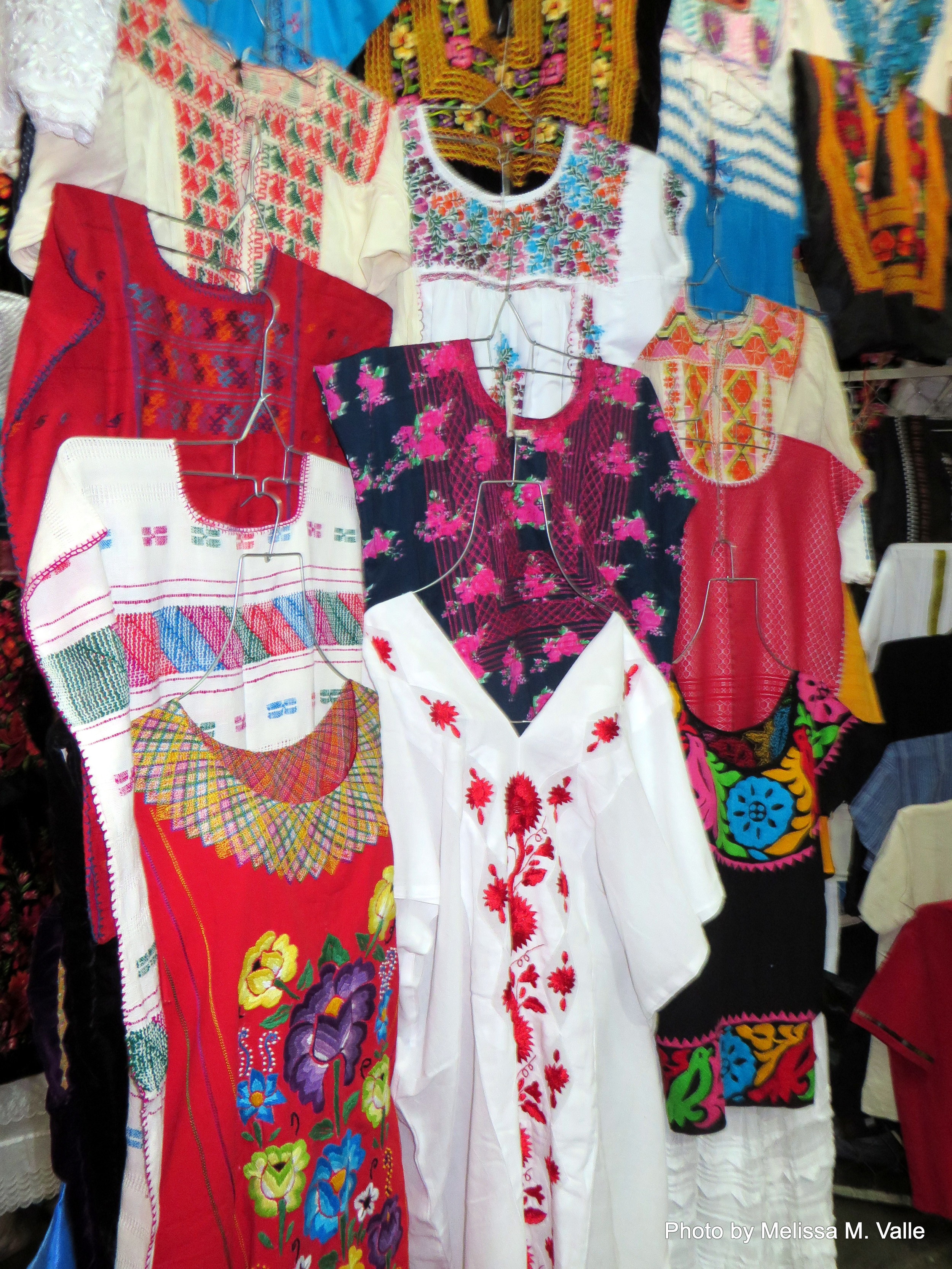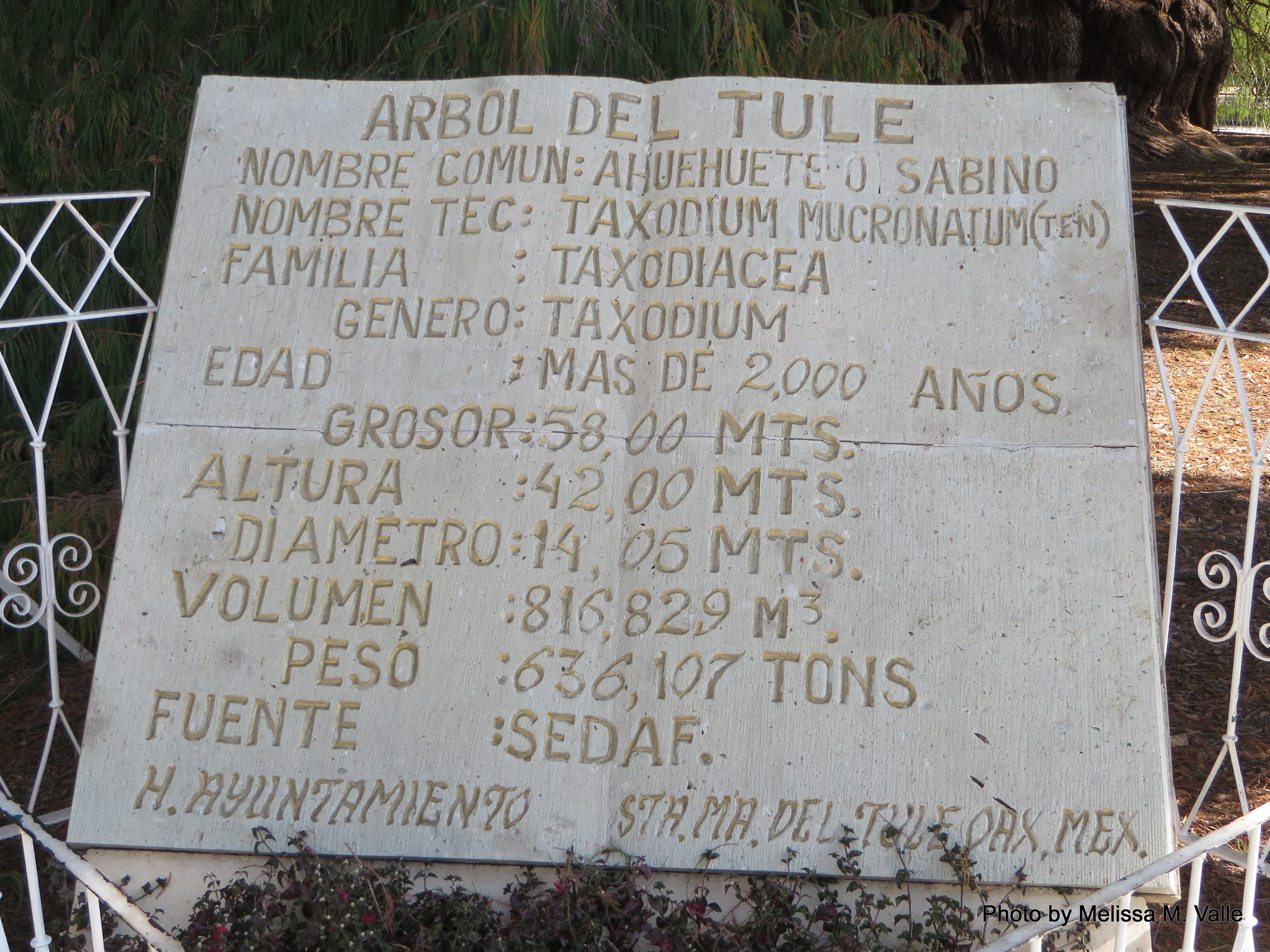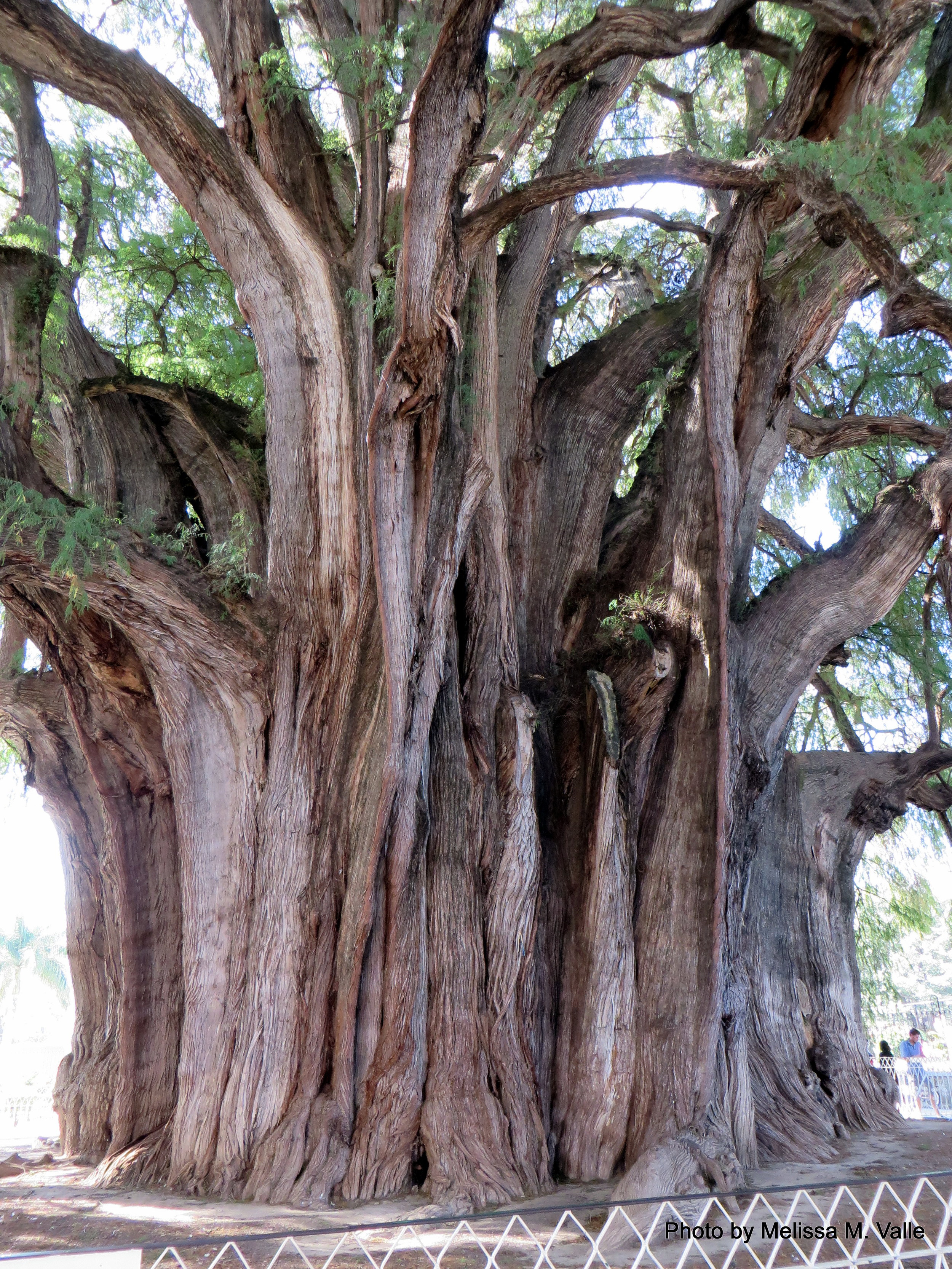Day 14- Tuesday, January 6, 2015: Day 1 in Oaxaca, Oaxaca
We arrived at the bus station around 7am and tried to contact Eduardo, the guy who was supposed to host us from Couchsurfers. But here he goes talking about some, “oh last night my roommate's friends came so you can’t stay tonight but you can stay tomorrow.” Boo. The tourist kiosk didn’t open until 9am at which point we got some hostel recs (couldn’t check the internet because there was no wi-fi, although there was an internet café). We got in a cab, which seemed overpriced at $40 pesos considering the walk was supposed to be 15 min., but we had all our stuff so we sucked it up. We had to stop at a few hostels before we ended up at a really low-end one called Posada Tanguyuu. The rates worked ($300 pesos per night, USD$11 each) for our private room and bath so we went with it, thinking we’d only have to stay one night. They allowed us to check in early and we dropped our things and rolled out to explore Oaxaca City.
We first went through Oaxaca City’s Zócalo. And it was striking because it was full of tents and signs referring to the 43 Ayotzinapa missing students. The encampments appeared to be set up in protest. I’ve mentioned previously the importance of these disappearances in terms of the political movement they’ve incited throughout Mexico, particularly in the state of Guerreros where the students were disappeared (see Tens of thousands protest massacre of Mexican student teachers). This spirit of anger and sadness was really visceral in Oaxaca City.
Regardless of whether folks actually consider it frequently, the political economy of a country affects most aspects of people's daily lives. As a sociologist, educator and former community development policy director such areas are of an obvious interest to me. But even without wearing any of these hats, an understanding of a place's political and economic climate when traveling provides a useful context to help to orientate you. A superficial understanding is often unavoidable in instances where you're really on the ground, but it's something that you will likely completely miss if you stay in a resort bubble, unless you actively seek it out. The owner of that major hotel chain and all the government officials who support and benefit from it are hard-selling happy places and don't really want you to know who's on strike, what the infant mortality rate is, how many folks are living below the poverty level, what the distribution of wealth is, what the relationship between the people and the police is, whether citizens support the state and feel adequately represented, whether the press is merely an organ of the state and private business interests, whether all children have access to a free and quality education. But these factors, coupled with an understanding of the interconnected politics of race, class and gender, plus elements related to culture (i.e. the learned behaviors of a society related to language, customs, symbols, etc.) are all crucial to the places you're going and an understanding can make the difference between you merely seeing a place and experiencing it in a socially responsible way.
If in the city of Oaxaca one's got to take into account that the people of Oaxaca have a history of actively protesting oppression. They are 'bout it for real! And the responses to the recent events with the students demonstrate that (For example see Mexican Teachers Block Oaxaca Airport to Protest Missing Students). These Zócalo encampments were first installed during the 2006 teachers protests. I'm doubting they've been up since then and were likely put up again in response to the missing and murdered students. Two of the wounded protesters and one of the disappeared were from Oaxaca.
The whole time we were there we kinda felt Oaxaqueños weren't really down for our little tourist interests. I'm not sure if it's related to this tension between the state and the people or if they are just less friendly there than the places we'd previously been, but all that Mexican warmth we'd felt before had clearly left the building. But hey, in the end I didn't take it personally. There is real shit going down.
So we walked around the Zócalo.
The Cathedral of the Virgin of the Assumption
Then we hit up a place on this NYTimes 36 Hours in Oaxaca article, the 20 de Noviembre market. The article was right. We walked in and were struck by smoke and meats.
There is a lot more pandering for customers at this market, which made it less enjoyable. We ended up at a place called Maria Theresa’s for tlayudas and enchiladas.
Maria Theresa was another grandmother- like figure so I tried to just keep a pleasant face as she went on about my “chino” hair (everyone keeps calling the curls chinos here), how much she liked it and how she had a young relative (niece or granddaughter) who had really straight hair and wanted chino hair and did everything she could to make it chino but it never worked. I’m sure she was sharing to be nice, but the constant convos about my hair are typically uncomfortable, awkward or just annoying.
*Don't be alarmed. That doesn't say "Mole Negro" as you might think. Mole (pronounced like Mo-lay) is one of Oaxaca's most famous sauces.
We left the market and walked to an artisan market called Mercado de Artesanias.
We then moved on to a spot called Café Nuevo for lemonade and coffee. It looked like someone decided to make use of a former horseway in a colonial home, but it was chill and had wi-fi so it worked. We then stopped by the space that Eduardo (Couchsurfer) was opening up. It's a café inside a cool pre-existing artist collective space called Espacio Zapatista. Revolutionary street art and such collectives apparently blew up following the 2006 and 2007 protests in Oaxaca.
We said we might all get up later but we never did and never stayed with him.
We stopped at this very funky little spot across the street and said what's up to Punk Frida.
We found the English books store called Amate Books, stopped at a place called Brújula for bagels and coffee, and then a tourist office to book a tour for the next day. We later ventured out for food and went to another spot on that NYTimes list called Biznaga (and every time I see it I just wanna say Bazinga!). But the wait just to sit at a table was 20 minutes and it didn’t seem worth it given the menu. We went to this spot called El Sagrario which was nothing to write home about. We gave up and took it down for the night. Womp womp.
I really don’t expect folks to shuck and jive for me as a tourist, but there was something unwelcoming about the city. Again, it could totally be a function of the political climate, which I get. But as a visitor there wasn’t a whole lot happening in the historic center (maybe on some underground shit that we never uncovered) and we wondered whether all the hype we’d heard about Oaxaca was restricted to the beachy coast and not the city.
Day 15- Wednesday, January 7, 2015: Day 2 in Oaxaca City, Oaxaca
We started the day at the Brújula on Alcalá and went to the tourist office on Murgia. We paid $200 pesos per person and the guy at the office told us that we would have to pay entrance fees for the various stops but that some could be discounted because of student rates. That wasn’t true because those rates only apply to Mexican nationals. Then of course there were different prices for things throughout. We rode for about 30 minutes.
The first stop was the 2000+ year old Tule Tree, which at 58 meters wide is apparently the world's widest tree according to Guinness. You pay $10 pesos to go into the gates which is supposed to be a contribution to help the community maintain the grounds.
We boarded the bus, went on the Panamerican highway and swooped around to the Sierra Madre Oriental to head to Hierve el Agua, which was 1.5 hrs from the Tule Tree. We had to pay $47 pesos and were told that 10 of these were for the new road or something like that.
Hierve el Agua is one of world's two places with petrified waterfalls made of carbonated salts. There are also two pools that we were told were warm but the water was too cold to swim in for us. Even though it wasn’t quite what we anticipated in terms of the beauty of the pools, it was still quite beautiful and worth the visit to me.
We then headed to an all-you-can-eat buffet in Mitla which cost something like $120 pesos.
From there we headed to the archaeological UNESCO World Heritage Site of Mitla. Unlike a lot of the other archaeological sites in the Americas this one was being used by local inhabitants upon its encounter by Europeans.
The site was used by the Zapotec people as a place for religious ceremonies and a sort of seat of government. But they also believed it to be a cave to another world. When the very Catholic Spaniards arrived and encountered the Zapotec at Mitla and were told this they thought it was a passage to hell and had it mostly destroyed, replacing one of its sites with a church dedicated to San Pablo to sanctify it. But you can still see some of the original elements in two of the best preserved and restored ruins.
- Layer (1) is believed to represent a seashell trumpet used to blow consciousness and talk to God.
- Layer (2) is believed to represent thunder and the Zapotec God of the rain.
- Layer (3) represents the five paths of human existence and is said to also be seen in Peruvian ruins.
We then took a 20 minute ride to a family-owned tejidas (textiles) workshop. This was honestly a highlight. As I’ve stated before Mexico really has some gorgeous artisan crafts and I just had no idea the kind of work that goes into the production of one of these pieces.
When a vendor says that the textile is created using natural colors that means that there was an extensive process to collect each color. To make red one has to use the nest of some insect that costs $3500 pesos/kilo (USD$250). Some colors require days to extract from things like flowers, plants and other natural elements. The shit is impressive.
We then headed to the El Rey de Matalan mezcal factory and saw the again extensive process involved in the local production of the mezcal from the agave plant (it’s basically Tequila but like Champagne in France it technically cannot be called as such unless it comes from Tequila, Mexico).
And while I’m not a fan of mezcal/tequila, we tasted 8 yr. and 6 mos. old standard versions and I did appreciate the sweeter blends. We went tasting crazy up in there, drinking shots of mango, mocha, pistachio, cappuccino, maracuya, herbs, coffee, cocoa and pina colada mezcal.
This was the end of the tour. We got dropped back off at the travel agency on Murgia and checked out El Sol y La Luna on Calle Pino Suarez, which was supposed to be a highly recommended for dinner. Meh. The food wasn’t particularly good or fairly priced. We weren’t given a filling portion and a woman whom I believe was the owner had a pretty stank attitude. By the looks of the posters on the wall they apparently have various jazz artists play there. Maybe they would’ve made it a more worthwhile experience. But food in general wasn’t what we expected in Oaxaca. Part of the problem is again the hype. Oaxaca is supposed to be the cuisine capital of Mexico. And granted, as stated previously, I’m no foodie. But I still like to eat well and the food in Oaxaca City was far more expensive than other places we’d been (almost double in many instances) and the quality appeared no better. Ho hum.
Day 16- Thursday, January 8, 2015: Day 3 in Oaxaca City, Oaxaca
We started the day out at a local panaderia (cuz I’m a bread whore) and Café Brujula for coffee. Salma swears a woman who came in, went to the bathroom and never came out was recording artist Lila Downs. It probably was and she left out some secret tunnel in the back to avoid the mobbing. We then hit up the Instituto Oaxaqueño de las Artesanías
Followed by the Museo de Arte Contemporaneo de Oaxaca.
We later spent time at Los Cuiles Café which would’ve been cool had they not been playing some sort of French honkey-tonk.
We later attempted to hit up a spot called Café Central but when we got there around 8:30pm it had yet to open. That would be our last attempt at kickin’ it at night in Oaxaca. There didn’t appear to be much of a scene and without Oaxaqueños to guide us the city fell pretty flat. Oaxaca City is good for about a day or two tops. But in spite of our dry sort of experiences in the city, I've still got much respect for the people of the city of Oaxaca's steadfastness in la lucha. Salute!

















































